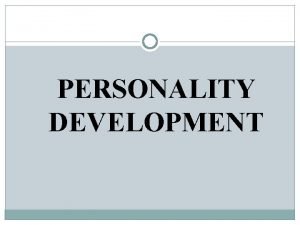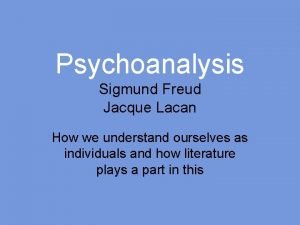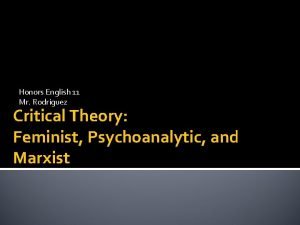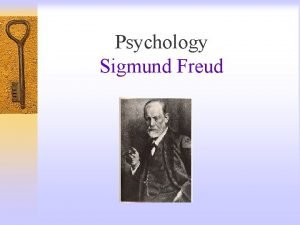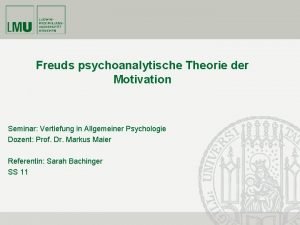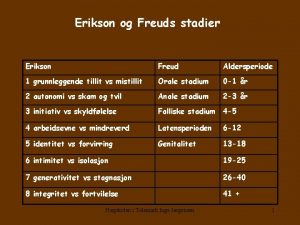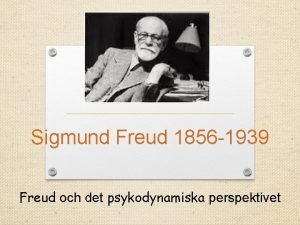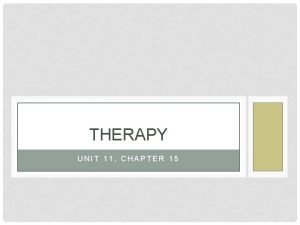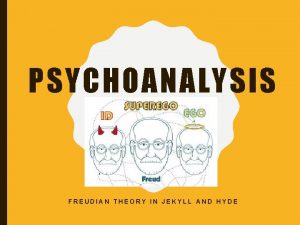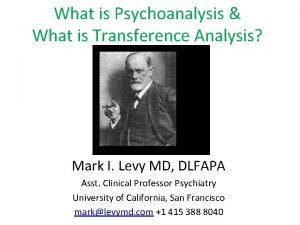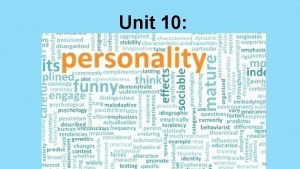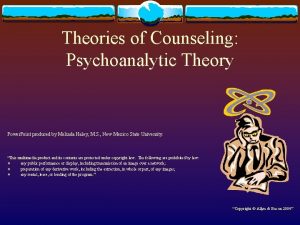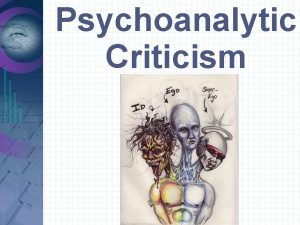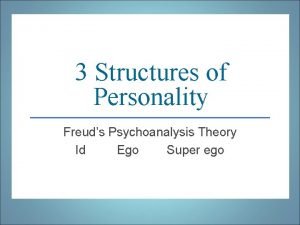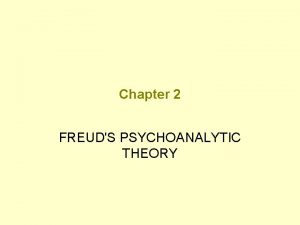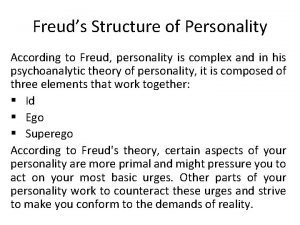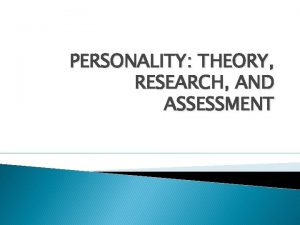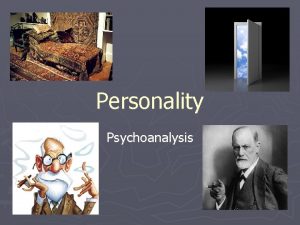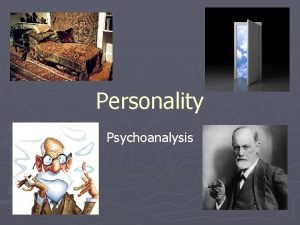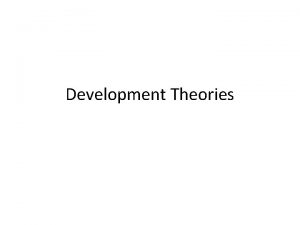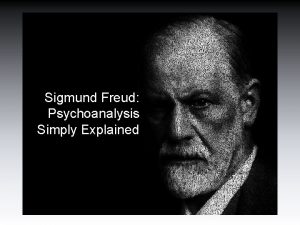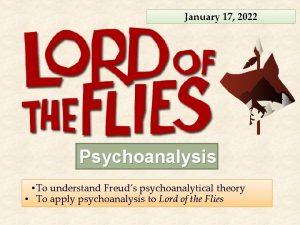Freuds Psychoanalysis Psychoanalysis Freuds theory of personality and

















- Slides: 17


Freud’s Psychoanalysis • Psychoanalysis – Freud’s theory of personality and therapy based on it

Neo-Freudians 11. 3 How did Jung, Adler, Horney and Erikson modify Freud’s theory? • Neo-Freudians - developed competing psychoanalysis theories – Jung: personal and collective unconscious, archetypes – Adler: inferiority and compensation; birth-order theory – Horney: basic anxiety and neurotic personalities – Erikson: social relationships across the lifespan

Other Perspectives

Behaviorism and Personality 11. 5 How do behaviorists and social cognitive theorists explain personality? • Behaviorists define personality as a set of learned responses or habits • Social cognitive theorists – emphasize importance of others’ behaviors and own expectations • Social cognitive view – learning via anticipation judgment, memory, and imitation

Humanism: The Third Force 11. 6 How do humanists explain personality? • Humanistic view focuses on traits that make people uniquely human • reaction against negativity of psychoanalysis and behavioral determinism “It’s always ‘Sit, ’ ‘Stay, ’ ‘Heel’— never ‘Think, ’ ‘Innovate, ’ ‘Be yourself. ’”

Rogers and Self-Concept • Self-actualizing tendency – striving to fulfill innate capabilities • self-concept – image of oneself; interactions with significant people

Rogers and Self-Concept • Sense of self is reflected in the words and actions of important people in one’s life

Rogers and Self-Concept • Real self - one’s perception of actual characteristics, traits, and abilities • Ideal self – what one should or would like to be REAL SELF Match = Harmony REAL IDEAL SELF Mismatch = Anxiety

Rogers and Self-Concept • Positive regard warmth, affection, love, and respect • Unconditional positive regard - positive regard given without conditions • Conditional positive regard - positive regard given when providers’ wishes fulfilled What kind of people are considered to be fully functioning?

Trait Theories of Personality 11. 7 What are the history and current views of the trait perspective? • Trait theories – describe characteristics for purpose of prediction • trait - a consistent, enduring way of thinking, feeling, or behaving • Allport - listed 200 traits believed to be part of nervous system • Cattell reduced number of traits to between 16 and 23

Trait Theories of Personality • Surface traits - outward actions of a person • Source traits – more basic traits forming core of personality • Example: Introversion is source trait in which people withdraw

The Big Five Theory

Assessment Of Of Assessment Personality

Who Uses Which Method? 11. 8 What are the advantages and disadvantages of different personality measures? Projective Tests Observations E c l e c t i c Interviews Inventories A s s e s s m e n t

Projective Tests • Projection - projecting one’s unacceptable thoughts or impulses onto others • Projective tests – ambiguous visual stimuli presented to client who responds with whatever comes to mind • Rorschach inkblot test - 10 inkblots as ambiguous stimuli • Thematic Apperception Test (TAT) 20 pictures of people in ambiguous situations • Subjectivity problems with projective tests “Do you mind if I say something helpful about your personality? ”

Behavioral Measures • Direct observation – professional observes client; clinical or natural settings • Rating scale - numeric value assigned to specific behavior • Frequency count – frequency of behaviors is counted • Observer effects/bias and lack of control
 Karen horney emphasized that childhood anxiety is caused by
Karen horney emphasized that childhood anxiety is caused by Freud's personality theory
Freud's personality theory Theory of psychoanalysis
Theory of psychoanalysis Psychoanalysis theory
Psychoanalysis theory Iceberg de freud
Iceberg de freud Module 55 psychoanalytic and psychodynamic theories
Module 55 psychoanalytic and psychodynamic theories Freud es ich überich
Freud es ich überich Freuds faser
Freuds faser Sigmund freud barn
Sigmund freud barn Freuds utvecklingsteori
Freuds utvecklingsteori Systematic desensitization therapy
Systematic desensitization therapy Jekyll and hyde psychoanalysis
Jekyll and hyde psychoanalysis Psychoanalytic therapy is to as humanistic therapy is to
Psychoanalytic therapy is to as humanistic therapy is to Transference
Transference Psychoanalysis
Psychoanalysis Sigmund freud psychodynamic theory
Sigmund freud psychodynamic theory Definition of psychoanalytic criticism
Definition of psychoanalytic criticism Shrek psychoanalysis
Shrek psychoanalysis

